When I practiced massage therapy, clients frequently came to me seeking treatment for lower back pain. Now, as a coach, I see that coaches will encounter many athletes with back pain, as well. In order to best help your clientele, it’s important for coaches to understand the muscles of the back, what can cause back pain, and treatments (after physical therapy, of course).
When I practiced massage therapy, clients frequently came to me seeking treatment for lower back pain. Now, as a coach, I see that coaches will encounter many athletes with back pain, as well. In order to best help your clientele, it’s important for coaches to understand the muscles of the back, what can cause back pain, and treatments (after physical therapy, of course).
Anatomy of the Back
The back is extensive and consists of many muscles that run all the way up to the occipitus. Before going into the musculature, we have to know the vertebral column. The vertebral column consists of seven cervical discs, twelve thoracic discs, five lumbar discs, and then the sacrum, which is a fusion of five discs.
The discs of the vertebral column gradually get bigger in size, with the cervical spine being the smallest of the disc structures. Cervical discs, thoracic discs, and lumbar discs have similar structures – including the lamina groove, spinous process, body, transverse process, and vertebral foramen.
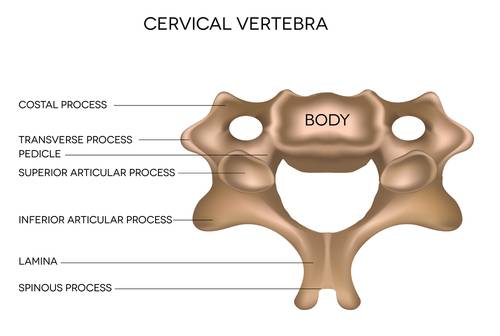
The most common piece of back musculature that most people are familiar with is the thoracolumbar aponeurosis. An aponeurosis is a tendon that is a sheet-like structure that is long and cable-like.
Other muscular structures of the back include the erector spinae, multifidi and rotatores, longissimus, spinalis thoracis, iliocostalis, serratus posterior inferior, quadratus lumborum, intertransversarii (located between the transverse process), and iliopsoas.
Many include iliopsoas with the muscles of the hip area, but when it comes to back pain, often the source of the pain comes from the psoas (that’s short for iliopsoas). We will also examine how the lower body muscles, like the hamstrings, have a huge impact on back pain.
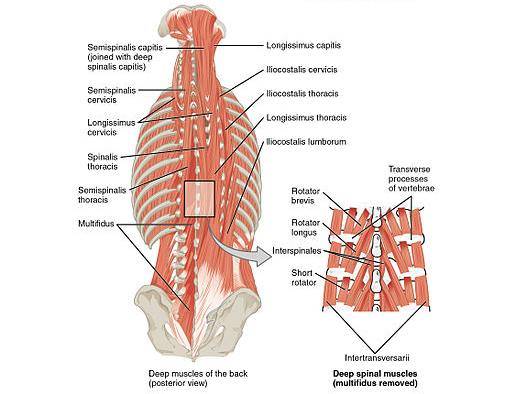
Types of Back Pain and Injuries
There are many types of back pain, so we will go over sports-related injuries that occur with back pain and their symptoms:
Back Muscle Strain/Back Ligament Sprain
In my personal practice, this is the most common type of back pain I see. This condition involves a stretch or tear of one or more back muscles, ligaments, or tendons. The cause is usually a violent twist, jerking motion, or over-extension of the back muscles during a lifting session or even during bodyweight movement (think violent kips).
The problem with this type of injury is that if the athlete is not fully rehabilitated, the chances are extremely high for it to develop into chronic lower back pain. All you athletes who like to go to, maybe, two physical therapy sessions and go back to training – it may not be in your best interest to half-ass your therapy.
If you want to go back to training, follow the treatment plans of your physical therapist, massage therapist, or chiropractor before going full force into training.
Herniated Nucleus Pulposus (HNP)
This type of injury is where preventative care is most important (and we will go over that part more). Excessive weight bearing and stress can damage the intervertebral discs. These round flat cushions act as a shock absorber between each vertebra in your spine.
Unfortunately for us, we only have one disc between each vertebra. Each disc has an outer ring of fibers called the annulus and a jelly-like center called the nucleus pulposus. A herniated disc causes pressure to the disc’s outer fiber causing it to rip and for the nucleus to rupture out of its normal space.
Symptoms of this condition include numbness, change in reflexes, and tingling in extremities. This type of injury requires that the athlete see a sports medicine doctor or chiropractor for treatment.
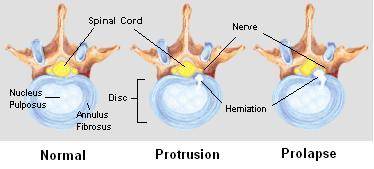
Spondylolysis
As of right now there is no definitive cause of this disorder. Spondyloysis can be found in children as a bone defect or in adults as an injury. Spondyloysis is commonly found in those who participate in sports that have frequent hyperextension of the lumbar spine.
Spondylolysis can be asymptomatic, but if symptoms occur the condition usually feels like chronic back pain. The pain can stem from mechanical (structural) or compression (pressure on the nerves). Suggested treatment is physical therapy or chiropractic care.
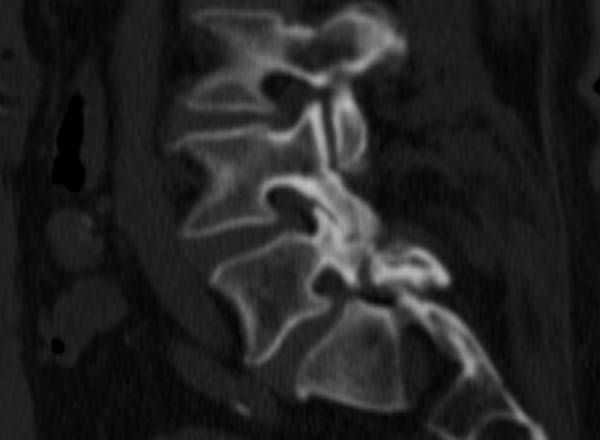
Mechanical Lower Back Pain
This may sound like its not an injury at all, but it is a frequent condition among athletes. Symptoms include general back pain, stiffness, and restricted motion. Usually the pain is localized to a specific area and without nerve pain.
There are several causes including past injuries that have not healed, anatomical abnormalities, faulty posture, and poor physical conditioning.
The concern with this type of injury is that because of the pain the athlete will unconsciously not engage the muscles of the back to perform activities and exercises, which only worsens the situation. With this type of injury it will be best to see a physical therapist regularly.
Preventative Care for Back Pain
There are many treatments for back pain that a physical therapist, doctor, nurse practitioner, physician’s assistant, or chiropractor will give you. Whatever the treatment you have elected, you should always follow your practitioners program in its entirety.
So the real question becomes what an athlete should do before needing treatment or after completing treatment.
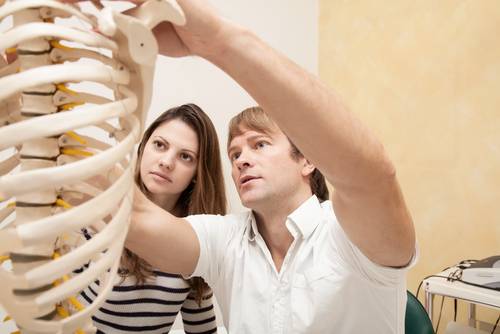
Preventative care is extremely important for athletes especially if they want to be competitive. Physical therapists, doctors, and chiropractors can catch certain symptoms before they start and begin rehabilitation at the sign of a problem. They can also educate athletes on how to prevent injuries from occurring.
A study was conducted in the Journal of Chiropractic and Osteopathic College of Australasia on the role of chiropractors as educators for preventative back injuries in the work place. In the study, chiropractors lectured participants on spinal injuries and how they could be prevented, including risk factors for injury and workplace awareness (so think gym-place awareness and athlete risk-factors).
The cost of reported back injuries went down by 57%. The dollar amount allocated to treatment was $451 in the six months prior to the training from the chiropractors – and only $194 in the first three months after. This is proof that getting educated on caring for your lower back can save your money and your gym performance.
Gym Guide to Low Back Health
Your time in the gym can be valuable in either preventing low back problems or rehabilitating them. But first and foremost, always be cleared by your therapist before going full force into the gym. You must start slowly when coming back from injury. Athletes often feel they can come back to the gym and do a hundred back extensions, when in reality, getting back up to speed is something that must happen slowly.
There are certain specific things to consider when it comes to lower back health:
- Lower back flexibility to encourage normal curvature of the spine. Without this flexibility, forward and lateral movements are disrupted, which can cause strain on the hamstrings, leading to lower back and hamstring pain.
- Hamstring flexibility allows for anterior rotation (tilt) of the pelvis in forward flexion and posterior rotation in a sitting position. Without this, the pelvis is restricted, which can cause disc compression.
- Hip flexor flexibility can achieve a neutral pelvic position. Those with tight hip flexors have an exaggerated anterior pelvic tilt, which can cause compression.
- Abdominal strength and muscular endurance will maintain proper position of the pelvis and reinforce the back extensor fascia. Weak abdominals exaggerate anterior pelvic tilt causing strain on the back extensor muscles.
- Back extensor strength and endurance provide stability for the spine, maintain posture, and control forward flexion. Weak back muscles increase stress on the spine and can cause compression.
Lower back pain can be irritating, but it can be healed. Hopefully proper therapy, a slow pace coming back into fitness, and preventative measures will help athletes have a healthy lower back again. Being pain free is always the goal and if you know you have these issues take the necessary precautions to insure your back is safe.
References:
1. Micheli, Lyle J M.D., The Sports Medicine Bible (New York: HarperCollins, 1995), 184-194.
2. Biel, Andrew LMP., Trail Guide to The Body (Colorado: Books of Discover, 2005), 176-196.
3. Tate, Phllip., Seely’s Principles of Anatomy and Physiology (New York: McGraw Hill Companies, 2012), 230.
4. Gelb, Daniel M.D. et Al., “Lower Back Pain in Athletes.” University of Maryland Medical Center (2013): eFirst, accessed January 27, 2014.
5. Tuchin, PJ., “Spinal Care Education as a Preventative Strategy for Occupational and Health Safety: a New Role for Chiropractors.” Journal of Chiropractic and Osteopathic College of Australasia (1998): 7(1) 8-14, accessed January 27, 2014.
Photos 1, 2, & 6 courtesy of Shutterstock.
Photo 3 by By OpenStax College [CC-BY-3.0], via Wikimedia Commons.
Photo 4 by [Public domain], via Wikimedia Commons.
Photo 5 by Hellerhoff (Own work) [CC-BY-SA-3.0], via Wikimedia Commons.






